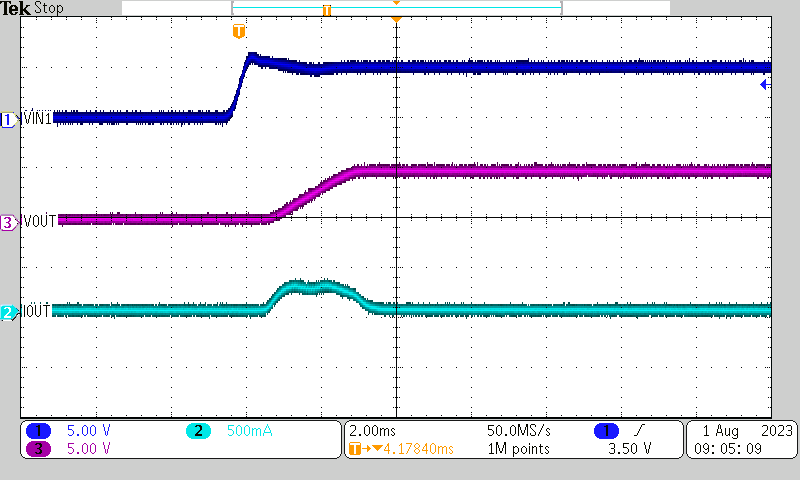SLVSGZ5A march 2023 – august 2023 TPS2117
PRODUCTION DATA
- 1
- 1 Features
- 2 Applications
- 3 Description
- 4 Revision History
- 5 Pin Configuration and Functions
- 6 Specifications
- 7 Detailed Description
- 8 Application and Implementation
- 9 Device and Documentation Support
- 10Mechanical, Packaging, and Orderable Information
Package Options
Mechanical Data (Package|Pins)
- DRL|8
Thermal pad, mechanical data (Package|Pins)
Orderable Information
8.2.3 Application Curves
Figure 8-2 shows 5 V being applied to VIN1. The output comes up with slew rate control and limits the
inrush current to below 500 mA.
 Figure 8-2 TPS2117 Inrush Current Control
Figure 8-2 TPS2117 Inrush Current Control
 Figure 8-2 TPS2117 Inrush Current Control
Figure 8-2 TPS2117 Inrush Current Control